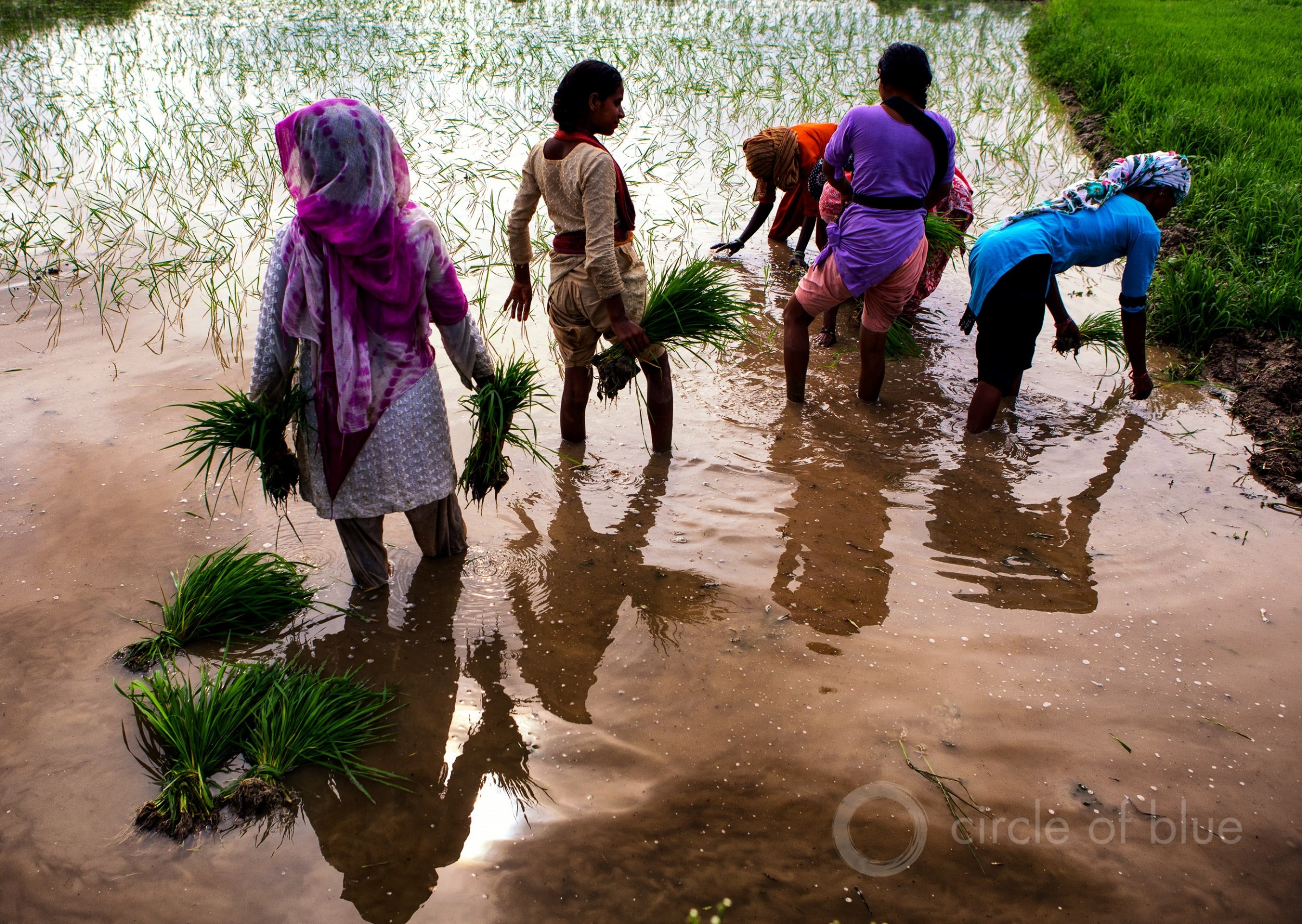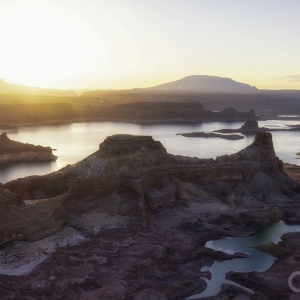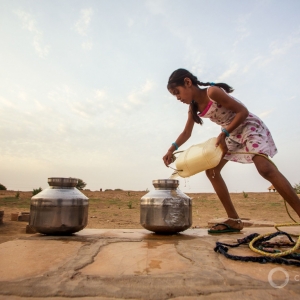The Stream, April 12, 2023: Southern Indian River Communities Contest Decades of Petrochemical Plants

In the northern Indian state of Uttar Pradesh, women transplant rice in a field that is irrigated with industrial wastewater pumped from a nearby canal. Photo © J. Carl Ganter / Circle of Blue
YOUR GLOBAL RUNDOWN
- While California rice farmers enjoy full water allotments for the first time in years, many are still planning for a dry future.
- A report sheds new light on a proposed dam near the Thailand-Myanmar border, where community resistance and political ambiguity have complicated the project.
- The Kenyan government is unveiling a $140 million plan to insure its livestock farmers against droughts.
- Residents of Eloor, in Southern India’s Kerala state, are continuing a decades-long fight to save the Periyar River from polluting industrial plants nearby.
The Central African Pipeline System, which would link 11 countries in an oil and natural gas network, gains momentum despite a backlash from environmentalists.
“The continent has the ability to be a key stakeholder of the green global economy and not just a victim of the climate crisis. We can’t acknowledge fossil energy as a sustainable source even if it is for the benefit of Africans because we are in an ongoing climate emergency.” — Dean Bhekumuzi Bhebhe, a member of Don’t Gas Africa, a civil society campaign against fossil fuel energy production.
According to Mongabay, “more than 60 percent of people in Central Africa have no access to electricity.” The Central African Pipeline System (CAPS) is seeking to change this by linking 11 countries — Chad, Central African Republic, Cameroon, Equatorial Guinea, Gabon, Republic of the Congo, Democratic Republic of the Congo, Rwanda, Burundi, and Angola — with 4,000 miles of pipeline to oil and natural gas resources.
Africa has historically contributed the least to global greenhouse gas emissions, despite being among the most affected by the climate crisis. Proponents of the project see the use of oil and gas as part of the “determined argument” that “Africa needs to exploit its oil and especially gas reserves to develop,” Mongabay reports. But environmentalists from these 11 countries caution against the short-sightedness of the project — that renewable energy will be cleaner, and more reliable, in the long term. In addition, they say that fisheries, crop yields, and groundwater reserves are at high risk of contamination if the project moves forward.
— Christian Thorsberg, Interim Stream Editor
Recent WaterNews from Circle of Blue
- U.S. Counts on “Climate-Smart” Farms to Slow Global Warming — But skeptics assert change in practices could increase risk to water and health.
- UN Water Conference Marked by Enthusiasm, Uncertainty — Conference produces more than 700 commitments for water.
The Lead
Close to 300 chemical companies occupy a dense industrial stretch in the town of Eloor along the Periyar River, a 150-mile watercourse in India that empties into the Arabian Sea. Once the lifeblood of numerous riverside communities, supporting both farming and fishing economies, the river and nearby groundwater all are contaminated, according to residents and scientific studies. Both parties blame the decades-old petrochemical plants, which spew dense fumes and have turned the river a dark color in their production of “pesticides, rare earth elements, rubber-processing chemicals, fertilizers, zinc-chrome products and leather treatments,” Al Jazeera reports.
Local authorities deny contamination, though community members say “the industries take in large amounts of freshwater from the Periyar and discharge concentrated wastewater with almost no treatment.” Scientists have also found clear evidence of adverse effects. In 1998, Kerala University researchers concluded that 25 species of fish had vanished from the region; more recently, India’s environmental court cited over a decade’s worth of studies showing that Eloor’s residents were put into harm’s way, exposed to multiple hazardous chemicals.
Residents have been demonstrating against the plants since the 1970s — so long ago that “some of the early protest leaders are elderly now and bedridden,” Al Jazeera reports. Now that most fish are gone, people are looking to migrate as well. Many of those who stay are choosing to no longer have children.
“When they claim to provide employment to many people through industrialisation, the net impact is that the livelihood of thousands is lost,” Anwar CI, a member of the Periyar anti-pollution committee, told Al Jazeera. “People cannot make a living from ruined land and water.”
This Week’s Top Water Stories, Told In Numbers
17
Number of atmospheric rivers that have brought much-needed rainfall to a dry California in recent months. As a result, the state’s rice farmers are preparing for a bounce-back year of yields while simultaneously strategizing ways to reduce water usage in the future. The availability of water this year, compared to last, has been night and day. Amid drought, some central California farmers in 2022 received 0 to 18 percent of their expected government water allotments; in 2023, they will receive 100 percent, Ambrook Research reports. Still, farmers are not counting on this to be the norm. Some are changing to a less water-intensive type of rice; others “let the water subside from a field by a couple of inches before adding more water to it,” though high-salinity fields do not have this luxury; others still are laser-leveling their fields so as to more evenly distribute water. But each proposed solution requires significant investment of time, money, and effort.
140 million
Dollars the Kenyan government is spending to insure its livestock farmers against losses incurred by droughts, Reuters reports. The Kenyan state department said that prolonged lack of rain has caused more than 15 percent mortality in livestock, and that 150,000 pastoralists are expected to benefit from the initiative.
On the Radar
The Salween watershed in northwest Thailand, just nine miles east of the Myanmar border, unites both the Salween and Yuam rivers. The basin contains “rich aquatic biodiversity, including many migratory fish species,” and is a lifesource for the resource-dependent communities who live alongside it, according to a new policy brief from Tea Circle Myanmar.
The Thai government’s most recent proposal for the basin includes the construction of a dam 69.5 meters high and pumping station, which would divert significant amounts of water over 60 kilometers through a tunnel — and several protected forests — to north-central Thailand. Residents of both countries along the border have contested the dam, saying that the $2.1 billion project would “exacerbate flooding during the rainy season,” deforest “spiritually-significant forests,” and block fish migration.
Myanmar’s downstream communities and local governing bodies have not been consulted on the project — per interviews with local community members, many are not opposed to development and the jobs it would bring, but they desire alternative visions for the basin’s future to be heard and considered.
More Water News
British Sewage — After years of little or no investment in infrastructure, sewage in Britain is flowing into rivers and other bodies of the water, The Atlantic reports.
South Korea Wildfires — Rainfall is helping firefighters quell gusting wildfires on South Korea’s eastern coast, Reuters reports. More than 500 residents have already been evacuated.
Christian Thorsberg is an environmental writer from Chicago. He is passionate about climate and cultural phenomena that often appear slow or invisible, and he examines these themes in his journalism, poetry, and fiction.







Leave a Reply
Want to join the discussion?Feel free to contribute!